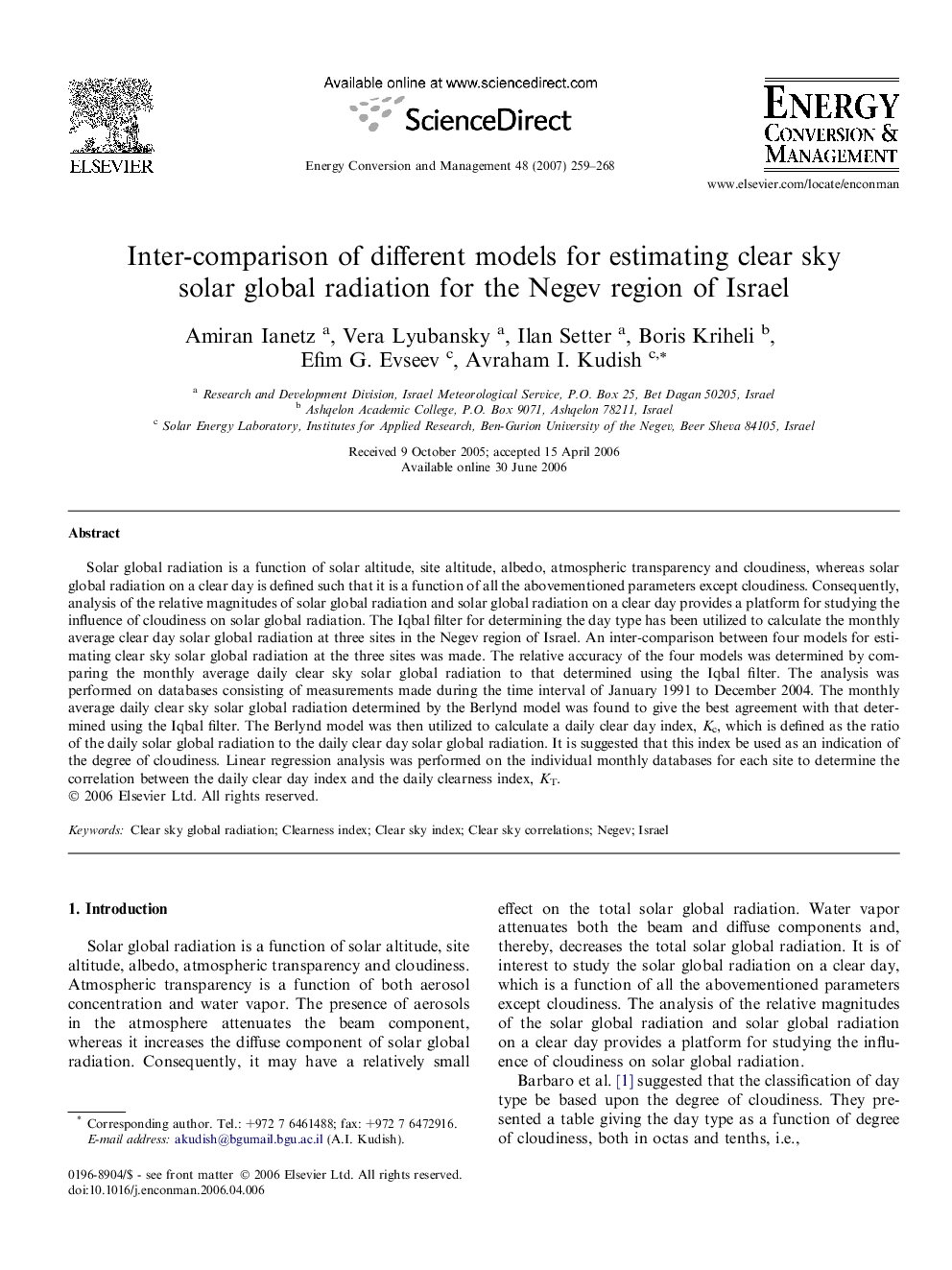| Article ID | Journal | Published Year | Pages | File Type |
|---|---|---|---|---|
| 765548 | Energy Conversion and Management | 2007 | 10 Pages |
Solar global radiation is a function of solar altitude, site altitude, albedo, atmospheric transparency and cloudiness, whereas solar global radiation on a clear day is defined such that it is a function of all the abovementioned parameters except cloudiness. Consequently, analysis of the relative magnitudes of solar global radiation and solar global radiation on a clear day provides a platform for studying the influence of cloudiness on solar global radiation. The Iqbal filter for determining the day type has been utilized to calculate the monthly average clear day solar global radiation at three sites in the Negev region of Israel. An inter-comparison between four models for estimating clear sky solar global radiation at the three sites was made. The relative accuracy of the four models was determined by comparing the monthly average daily clear sky solar global radiation to that determined using the Iqbal filter. The analysis was performed on databases consisting of measurements made during the time interval of January 1991 to December 2004. The monthly average daily clear sky solar global radiation determined by the Berlynd model was found to give the best agreement with that determined using the Iqbal filter. The Berlynd model was then utilized to calculate a daily clear day index, Kc, which is defined as the ratio of the daily solar global radiation to the daily clear day solar global radiation. It is suggested that this index be used as an indication of the degree of cloudiness. Linear regression analysis was performed on the individual monthly databases for each site to determine the correlation between the daily clear day index and the daily clearness index, KT.
